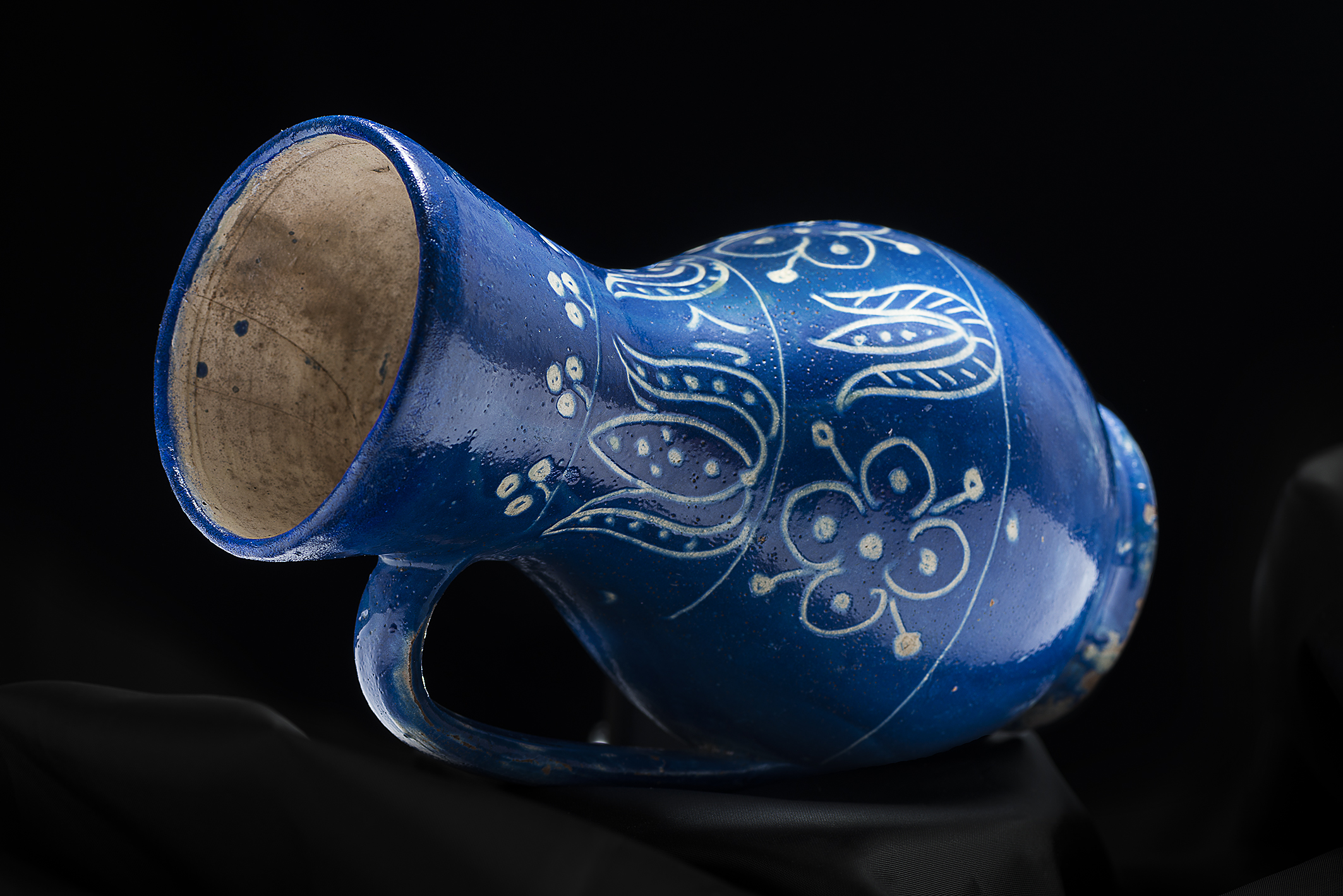Gyűjtés helye, éve: Nyíregyháza, 1919
Készítés helye, ideje: Erdély, 1782
Gyűjtemény: Jósa András Múzeum néprajzi gyűjteménye, ltsz. 55.897.3.
Méret: 19,8 x 8,1 x 7 cm
A habán kerámia sajátos népi változata az úgynevezett erdélyi kék sgraffitós kerámia. Az erdélyi kerámiától formában és díszítésben eltérő típust nagyrészt kis formájú bokályok és tálak alkotják. Legfőbb jellegzetessége a kék szín és a bekarcolt díszítés mellett az, hogy szinte mindegyik darab évszámos. Ezt a technikát először 1743-ban említik, zömmel azonban a XVIII. század második felében és a XIX. század elején készültek. A kerámiák úgynevezett „fehéredényes” technikával készültek: a megszáradt edényt először fehér ónmázba mártották és kiégették, majd kékkel színezett ónoxidos ólommázba mártották. A kék mázat aztán a kívánt mintának megfelelően egy hegyes tű segítségével lekaparták a fehér ónmázig, majd újra kiégették az edényt. Ezek a minták mindig keményebb rajzúak, mint a kék habán edényeké, azonban feltűnő hasonlóság mutatkozik a két típus között. Hasonló motívumok is felfedezhetők rajtuk, mint például a statikus reneszánsz virágdíszek, a tulipánok ötszirmú változata, vagy az ananászmotívum. A sgrafittós edények mintái két csoportra oszthatók: az egyik csoportot a stilizált virágminták, a másikat madármotívumok alkotják. A virágornamentika főleg a korai – XVIII. századi – darabokat jellemzi.
A Jósa András Múzeum néprajzi gyűjteménye több kék sgrafittós edényt őriz. Ezek mindegyike datált; az 1782 és 1805 közötti időszakból származnak. Díszítésük ananász-, tulipán- és madármotívumokból áll. Az itt bemutatott bokály falát vízszintesen három részre tagolt felületen öt- és háromszirmú tulipánok, négyszirmú virágok ékesítik. Az ötszirmú tulipánfejek között kétfelé választva az 1782-es évszám olvasható össze.
Place and year of acquisition: Nyíregyháza, 1919
Place and time of making: Transylvania, 1782
Collection: Jósa András Museum, Ethnographic Collection, inv. no. 55.897.3.
Size: 19.8 x 8.1 x 7 cm
The characteristic folk version of the ceramics of the Habán ethnic group is the ceramic with blue sgraffito in Transylvania. A difference from the other ceramic types made in Transylvania is obvious regarding shape and ornamentation of these normally small pitchers and bowls. Its main characteristic is – besides the blue colour and the engraved ornamentation – that almost every piece displays the year of making. The first mention of this technique dates from 1743 but the majority of the objects had been made in the second half of the 18th and the beginning of the 19th century. The ceramics were made with the technique called “white pot”: the dried pot was first submerged in white tin glaze and then burnt. After it was dipped into blue tinted lead gaze with tin oxide. To design a pattern, the blue glaze was scratched off with a sharp needle until the layer of the white tin glaze was reached and the pot was burnt again. They carry similar design too, like the renaissance static floral ornaments, the tulip with five petals or the pineapple motif. There are two groups of the patterns applied on the pots with sgraffito: one is decorated with stylized floral patterns, the other one with bird motifs. Most of the objects made in the 18th century are decorated with floral ornaments.
The ethnographic collection in the Jósa András Museum has several pitchers with blue sgraffito. They all are marked with a date; they were produced between 1782 and 1805. They are decorated with pineapple, tulip and bird motifs. The wall of the pitcher presented here is horizontally divided into three parts where tulips with five and three petals and flowers with four petals are applied. The year 1782 split into two parts can be read between the tulips with five petals.




